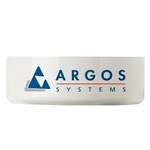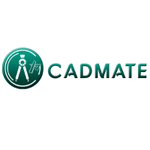Description

Envisioneer Home Design

InnoPlanner
Comprehensive Overview: Envisioneer Home Design vs InnoPlanner
Envisioneer Home Design and InnoPlanner are both software products used for architectural design, particularly in creating home designs and interior planning. Below is an overview that covers their primary functions, target markets, market share and user base, as well as key differentiating factors.
a) Primary Functions and Target Markets
Envisioneer Home Design
-
Primary Functions: Envisioneer Home Design is a comprehensive architectural design software that allows users to design home interiors and exteriors, create 3D models, and produce detailed architectural drawings. This tool also includes features like project management, cost estimation, and virtual reality integration for immersive design experiences.
-
Target Markets: Envisioneer is tailored for architects, interior designers, home builders, real estate professionals, and DIY enthusiasts who require a robust tool for home design projects. Its versatility makes it suitable for both professional and consumer markets.
InnoPlanner
-
Primary Functions: InnoPlanner is an online-based interior design software tool focusing on space planning, furniture arrangement, and 3D visualization. It's designed to facilitate the design process with an easy-to-use interface suitable for quick concept generation and customer engagement through its web-based platform.
-
Target Markets: InnoPlanner primarily targets interior designers, furniture retailers, and e-commerce websites. The software is often used by businesses in the furniture industry to improve customer interaction and sales conversion through compelling visual content and interactive design experiences.
b) Market Share and User Base
-
Envisioneer Home Design: Envisioneer, being a more established software with a broad set of features, holds a significant share in the architectural design market. It is especially popular in North America and has a substantial user base comprised of professionals in the construction and real estate sectors as well as hobbyists.
-
InnoPlanner: InnoPlanner's market share is smaller in comparison to more established design software, but it holds a niche presence in the online interior design and furniture retail sectors. Its user base includes a growing number of small to medium-sized enterprises (SMEs) and individual designers who value cloud-based solutions and ease of integration with e-commerce platforms.
c) Key Differentiating Factors
-
Technology and Access:
- Envisioneer Home Design is a desktop application, offering a wide array of features and offline access. It supports heavy graphics and robust modeling tools, ideal for detailed architectural work.
- InnoPlanner is a cloud-based and web-accessible software, which makes it easier for users to access designs from anywhere and share them online, appealing to those who value collaboration and flexibility.
-
Complexity and Ease of Use:
- Envisioneer, with its advanced feature set, can require a steeper learning curve, making it more suitable for professional designers and architects with specific technical needs.
- InnoPlanner offers a more user-friendly interface that caters well to users looking for simplicity and ease of use, such as retail staff and clients in a showroom setting.
-
Integration and Customization:
- Envisioneer provides comprehensive integration with BIM (Building Information Modeling) tools, which is a major draw for professionals involved in larger construction projects requiring detailed documentation and compliance.
- InnoPlanner allows seamless integration with e-commerce platforms and augments retail and sales environments with its visual planner, making it highly customizable for marketing and sales-focused applications.
In summary, while Envisioneer Home Design caters to a more traditional market of architects and home builders with its extensive feature set and offline functionalities, InnoPlanner focuses on providing accessible, online solutions that aid customer interaction in the retail setting, especially for the furniture industry.
Contact Info

Year founded :
Not Available
Not Available
Not Available
Not Available
Not Available

Year founded :
2015
Not Available
Not Available
United Kingdom
http://www.linkedin.com/company/innoplanner
Feature Similarity Breakdown: Envisioneer Home Design, InnoPlanner
When comparing Envisioneer Home Design and InnoPlanner, both of which are popular tools in the field of home design and interior planning, it's important to evaluate their core features, user interfaces, and any unique features that distinguish them from one another. Here’s a breakdown:
a) Core Features in Common
-
3D Modeling and Visualization: Both Envisioneer Home Design and InnoPlanner allow users to create detailed 3D models of buildings and interior spaces. They provide tools for designing floor plans, elevations, and sections with high-quality visualizations.
-
Floor Planning: Each software includes functionality for creating floor plans which can be customized to fit user specifications. This includes walls, windows, doors, and other architectural elements.
-
Material and Texture Libraries: They offer extensive libraries of materials and textures that users can apply to their designs. This feature helps in visualizing different design aspects realistically.
-
Furniture and Fixture Libraries: Both platforms have a library of objects including furniture and fixtures, enabling users to furnish their virtual spaces effectively.
-
Support for Importing and Exporting Files: Envisioneer and InnoPlanner support various file formats, making it easy to import existing designs or export new ones for further processing or sharing.
-
Customization and Editing Tools: Users can customize elements within the design, providing flexibility in terms of layout, sizes, colors, and shapes.
b) Comparison of User Interfaces
-
Envisioneer Home Design:
- Typically offers a more traditional desktop application interface, which may involve multiple toolbars and panes providing direct access to various features.
- It’s generally more feature-rich with comprehensive toolsets, catering to both beginners and professionals who require more advanced options.
- It can have a steeper learning curve due to the depth of its functionalities.
-
InnoPlanner:
- Known for its web-based platform, offering an accessible interface directly through a browser, which allows for more intuitive navigation and ease of use.
- The interface is often simpler and more streamlined, which can be advantageous for newer users or those who prefer cloud-based solutions.
- May have fewer deep options than desktop software, focusing more on ease of access and collaborative aspects given its web environment.
c) Unique Features
-
Envisioneer Home Design:
- Often includes more detailed construction and architectural tools suitable for builders and architects who require precise documentation and planning.
- Features like VR support and augmented reality can set it apart, offering immersive visualization experiences.
- May provide superior compatibility with other CAD software and more advanced rendering engines.
-
InnoPlanner:
- Being web-based, it offers unique advantages in terms of collaboration, as multiple users can work on a project simultaneously from different locations.
- Because it’s online, it allows easy updates and improvements without requiring major downloads or installations.
- Often integrates seamlessly with other online tools and resources, creating a versatile design ecosystem.
Each product has its strengths, and the choice between them may depend on whether the user prioritizes depth and traditional software setup (Envisioneer) versus accessibility and collaboration capabilities (InnoPlanner).
Features

Detailed Documentation
Easy Floor Plan Creation
Collaborative Design Tools
Realistic 3D Visualization
User-Friendly Experience

User-Friendly Interface
Collaboration Tools
Integration Options
Design Templates
Best Fit Use Cases: Envisioneer Home Design, InnoPlanner
Envisioneer Home Design and InnoPlanner are both powerful tools in the field of design and architecture, each catering to different needs and preferences. Here's a breakdown of their best fit use cases:
Envisioneer Home Design
a) For what types of businesses or projects is Envisioneer Home Design the best choice?
-
Residential Design Firms:
- Envisioneer Home Design is particularly well-suited for businesses focused on residential projects. It offers robust tools for creating detailed home designs, floor plans, and 3D visualizations, making it ideal for architects and designers specializing in single-family homes and multi-unit housing.
-
Home Builders and Remodelers:
- The software is an excellent choice for builders and remodelers looking to provide immersive visualization experiences for their clients. Envisioneer's ability to produce accurate 3D models and real-time walkthroughs can help in communicating design ideas effectively to homeowners.
-
Interior Design Studios:
- With its focus on detailed interior spaces, Envisioneer is a great tool for interior designers. It allows them to plan room layouts, select furniture, and visualize interior finishes, enhancing client presentations and decision-making processes.
-
Educational Institutions:
- Schools and universities offering architectural and interior design courses can leverage Envisioneer for teaching purposes. Its user-friendly interface is suitable for students, helping them grasp the essentials of design and visualization.
c) How does Envisioneer Home Design cater to different industry verticals or company sizes?
-
Customization and Flexibility: Envisioneer provides a range of customizable templates and tools that suit various industry needs, from basic home designs to complex renovations. It's scalable, making it useful for small design studios and large architecture firms alike.
-
Affordability for Small Businesses: Small to medium-sized businesses can benefit from its affordability and comprehensive features, allowing them to compete with larger firms without compromising on quality.
InnoPlanner
b) In what scenarios would InnoPlanner be the preferred option?
-
Furniture Retailers:
- InnoPlanner is particularly advantageous for furniture retailers looking to provide an interactive shopping experience. With its 3D room planning capabilities, customers can visualize how different furniture pieces fit into their spaces.
-
E-commerce Platforms:
- Online retailers can use InnoPlanner to offer customers a way to design their interiors with available products, enhancing the online shopping experience and potentially increasing sales conversion rates.
-
Custom Cabinetry and Kitchen Design:
- Companies specializing in custom kitchen and cabinetry design will find InnoPlanner useful due to its detailed design capabilities and product catalog integration, allowing clients to visualize and customize their kitchen spaces before purchase.
-
Home Improvement Stores:
- Large home improvement chains can implement InnoPlanner in-store kiosks or online platforms to help customers design and plan projects using the store’s available products and materials.
d) How does InnoPlanner cater to different industry verticals or company sizes?
-
B2B and B2C Applications: InnoPlanner is versatile, catering to both B2B and B2C markets. Its 3D design capabilities help businesses provide a more interactive and personalized customer experience, applicable to various industry sizes.
-
Web-Based Flexibility: Being web-based, InnoPlanner is accessible from any device, making it ideal for businesses of all sizes wanting to implement design tools without heavy investment in hardware or IT infrastructure.
In summary, Envisioneer Home Design excels in environments focused on detailed residential and interior design, catering to both small and large companies with diverse needs. InnoPlanner, on the other hand, shines in retail and e-commerce settings, offering robust tools for businesses looking to enhance customer engagement through interactive design and planning solutions.
Pricing

Pricing Not Available

Pricing Not Available
Metrics History
Metrics History
Comparing undefined across companies
Conclusion & Final Verdict: Envisioneer Home Design vs InnoPlanner
Conclusion and Final Verdict for Envisioneer Home Design vs InnoPlanner
After evaluating both Envisioneer Home Design and InnoPlanner based on various factors such as functionality, user interface, flexibility, pricing, and support, a balanced view emerges regarding their applicability for different user needs.
a) Best Overall Value
Envisioneer Home Design appears to provide the best overall value, particularly for users seeking a comprehensive home design solution. Its robust features and advanced capabilities make it suitable for both professional designers and serious hobbyists who require a detailed and immersive design experience.
b) Pros and Cons of Each Product
Envisioneer Home Design:
-
Pros:
- Comprehensive Features: Offers a wide range of advanced tools for 2D and 3D design, rendering, and visualization.
- User-Friendly Interface: Despite its complexity, it maintains a user-friendly interface that eases the design process for beginners and experts alike.
- Strong Community and Support: Backed by a solid community and customer support, providing resources and assistance when needed.
- Detailed Documentation: Excellent for professionals needing in-depth documentation and support in executing complicated projects.
-
Cons:
- Higher Learning Curve: Due to its extensive features, beginners might find it challenging to master without proper training or practice.
- Cost: It tends to be on the higher end in terms of pricing, which may deter casual users or those on a tight budget.
InnoPlanner:
-
Pros:
- Web-Based Platform: Being cloud-based, it allows for easy access and collaboration from any device with internet connectivity.
- Ease of Use: More intuitive for beginners, with drag-and-drop functionality that simplifies the design process.
- Affordability: Generally more cost-effective, making it an attractive option for small businesses or individuals looking for budget-friendly solutions.
- Flexible Integration: Offers APIs and integration with other tools, which can be beneficial for businesses looking to incorporate the software into existing workflows.
-
Cons:
- Limited Advanced Features: Less robust in terms of high-end design and rendering features compared to Envisioneer.
- Dependence on Internet Connection: Since it is cloud-based, it requires a reliable internet connection which could be a limitation in areas with poor connectivity.
c) Recommendations for Users
-
For Professionals and Enthusiasts: If you are a professional designer or a hobbyist who values detailed customization and powerful features, Envisioneer Home Design is the stronger choice. The initial investment in learning and cost is met with rich functionality and higher-quality outputs.
-
For Small Businesses and Casual Users: If your needs are less intensive, or if budget constraints are a concern, InnoPlanner might be more suitable. Its web-based platform offers flexibility and ease of use, which is ideal for small teams or individual users seeking simplicity and accessibility.
In summary, the decision between Envisioneer Home Design and InnoPlanner should be guided by the specific needs, experience level, and budget of the user. Consider the complexity of your projects, your preference for desktop versus web-based applications, and whether advanced features are essential for your work.
Add to compare
Add similar companies




